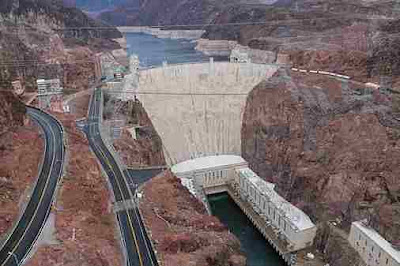How Many Dams Are in Pakistan?
If you've ever wondered how many dams are in Pakistan, you've come to the right place. There are about 150 of them in the country, including the largest earth-filled dam in the world, the Tarbela Dam. Other noteworthy reservoirs include the Hub Dam, the second-largest, and the Mangla Dam. Listed below are some facts about these dams. Read on to learn more about them.
150
Indus Basin Project: Besides building large dams for hydropower generation, Pakistan is also engaged in the construction of irrigation canals and regulating river flows. Consequently, Pakistan's agricultural yields were low, mainly because of seasonal fluctuations in river flow. In addition, the country lacked storage reservoirs for surplus flows, which limited its ability to develop agriculture. Hence, the government embarked on the construction of 150 dams in Pakistan.
The construction of large dams in Pakistan requires engineering expertise and complex financial dealings. Unfortunately, the country is short of both of these experts. However, Pakistan has a lot of water storage sites that could benefit from such dams. It would be in the government's interest to allow visitors free access to these sites to increase tourism, generate more tax revenue, and encourage new business ideas. There are many benefits to this approach. Here are some suggestions for how the government can encourage foreign investment in water resources.
Tarbela Dam is the largest earth-filled dam in the world:
The Tarbela Dam is the largest earth-fill dam in the world and is currently the fifth-largest structure in the world, by volume. It was originally built to control flooding on the Indus River and irrigate millions of acres of farmland. Since then, it has been expanding hydropower facilities and generating electricity to meet the demand of Pakistan's growing population.
The Tarbela Dam project has been a joint venture between a consortium of heavy civil engineering contractors. In 1969, three Italian and three French companies joined together to form the joint venture. Several German and Swiss companies joined the project later. The consortium was led by Italian contractor Impregilo, and the other three Italian and French heavy civil engineering companies included Costruzioni Generali Farsura and Impresa Astaldi Estero.
Hub Dam is the third largest:
The Hub Dam is a large water reservoir located on the Hub River in Sindh Province about 56 km northeast of Karachi. It was built in 1981 to provide irrigation water for the surrounding area and domestic water for Karachi. The Hub Dam is home to a variety of fish species including the Mahseer (Tor putitora), a lizard-like fish that can grow up to two meters in length. Due to low summer rainfall, the water level in the dam has dropped drastically.
Mangla Dam is the second-largest reservoir:
The Mangla Dam is the ninth-largest dam in the world. It was built on the Jhelum River in 1967 and measures 3,140 meters in length. It was originally built as a storage facility for water but was later modified to provide hydropower electricity. The reservoir is a popular tourist destination in Pakistan, and locals are known to visit the reservoir for water sports. It can generate up to 1,500 megawatts of power, making it one of the world's largest reservoirs.
Mangla Dam, Pakistan's third-largest dam, is also the third-largest in the world. It stands at 147 meters (482 feet) high and stretches over 3140 meters. Its primary function is to provide irrigation, but it also generates electricity. It was initially built as a water storage reservoir and was later modified to produce hydropower electricity. Currently, the Hub Dam has a capacity of 750 megawatts.
Pakistan was once reliant on the unregulated flow of the Indus River and its tributaries. Due to seasonal variations in river flows, Pakistan's agricultural yields were low. Without storage reservoirs for excess water, the country faced severe shortages during its most important growing season. Today, the dam provides electricity for nearly one million households in Pakistan. The dam covers 253 square kilometres.
Rawal Dam is a multi-function dam:
The Rawal Dam is a multi-function reservoir that produces irrigation water for a large area in Punjab. The dam's crest level is approximately 531 m, and its height is around 40 m. The reservoir is also a popular fishing spot. Its production of water makes it a very cost-effective means of irrigation. This lake also is a great place to visit for picnics, with many families planning trips and gatherings around the reservoir.
The Rawal Dam is a great tourist attraction in Islamabad. Built-in 1962, it provides water for the twin cities of Rawalpindi and Islamabad. Its water capacity is about 42,000 acre-feet. The Rawal Lake, which sits in the reservoir, is a beautiful location. It's also an excellent example of stone masonry. A picnic here is sure to be fun for everyone.
Khanpur Dam
Khanpur Dam is a favourite picnic spot for locals. In the last week, three separate incidents have occurred at Khanpur Dam, which has forced the federal government to restrict swimming and bathing at the site. In the first instance, two children drowned during a wedding party at the nearby reservoir. Their bodies were recovered by local residents and returned to their families. The second incident occurred when a 17-year-old girl slipped into the deep water of the reservoir. Both incidents were the fault of human error.
The dam is located near the village of Khanpur, which is the capital of K-P. The dam forms a lake which serves as a major source of water for the area.
During the summer season, it attracts scores of tourists for various activities including kayaking, jet-skiing, and cliff-jumping. There is also a water resort at the site. Khanpur Dam is located in the District Haripur and the Wah Cantonment in the province of Khyber Pakhtunkhwa. Its total water storage capacity is approximately 79,980 acre-feet.







0 Comments